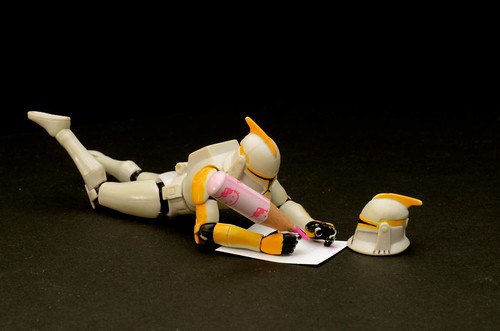Ever heard of the literary term "foil" before? It doesn't have anything to do with fencing, or headgear worn by alien conspiracy theorists. The word foil comes from the old practice of backing gems with foil in order to make them shine more brightly, and in stories, foils are characters that contrast with the main character to emphasize their traits. In the Shrek movies, Donkey is a perfect foil to Shrek's character. Donkey is small, talkative, optimistic and annoying, a perfect contrast to Shrek's brawny appearance and cynical personality.

Julie Kagawa had so much fun with contrasts and foils in her
Iron Fey series, my most favorite YA fantasy series. She used contrasts EVERYWHERE, and I think they are a big reason for the success of this series. And the books are full of mythical creatures, some traditional, some original - which makes me very happy. Yes, if you haven't figured out by now, I'm a little mad about mythical creatures.
The very premise of the Iron Fey is a contrast: the fey are ancient, immortal, beautiful, and heartless. The Iron fey are a new type of fey that are modern, bizarre, and techy, the opposite of the traditional fey in almost every way.
And then there are the character contrasts! In all four books, Puck is a vibrant, fun-loving, irreverent contrast to Prince Ash's cold, noble reserve, a great example of a foil.
In the fourth book, the author created two more great foils: Grimalkin is a clever, smug, know-it-all fairy cat. What's the opposite of a cat? A dog. What's the best foil for a fairy cat? The Big Bad Wolf! He creates a powerful, dangerous, primal contrast to Grimalkin's cute smugness.
The fourth book also creates a foil to Meghan, half human-half fairy, practical, loyal, blundering into all kinds of mistakes and problems as she tries to navigate the world of the fey. Her foil is another girl with all the opposite attributes - but to give anymore details about Meghan's foil would be a major spoiler.
Here's five tips for creating character contrasts that I learned from the Iron Fey series and other famous foils (Sherlock Holmes/Dr. Watson, Shrek/Donkey)
1. Physical contrast: Shrek is huge and brawny, Donkey is small and wimpy. Other basic examples: tall and thin/short and fat. Fair-haired/dark-haired. Agile/clumsy.
2. Emotional contrast: if your main character is moody and rebellious, highlight these traits with a foil character that is sunny-tempered and always goes "by the book". Find your character's primary attitude and then create a character that is the opposite. Flighty/dependable. Possessive/careless. Prideful/humble. Thrill-seeker/cautious. I actually have a list of almost 100 attitudes and their opposites that my old writing group put together - I'd be happy to share it if anyone's interested.
3. Background or experience contrast: if your main character comes from the wrong side of the tracks, make a foil character from a rich, snobby background. Or naive, inexperienced character can be paired with a wise, experienced mentor character. Even better, after establishing the inexperienced/experienced characters, create another fun contrast in the second half of a story by switching the scenarios so your main character is on familiar ground where they are experienced, and your wise mentor is now on unfamiliar ground!
4. Cliche contrast: Dogs and cats are traditional enemies. A great contrast in themselves, you can extend the contrast by forcing them to be allies instead of enemies. One of the great twists in the Twilight series is when traditional enemies vampires and werewolves were forced to become allies to defend themselves against a greater foe.
5. Your main character(s) should occasionally show contrast in themselves too, especially in the second half of the story to emphasize character arc. You don't want them to always act predictably!
After googling for some more famous foils, I came across this
fantastic list from tvtropes.com (and kudos to them for also reminding about foil hats and alien conspiracy theorists).
And for more reasons why you'll love the Iron Fey series, here are my gushing reviews:
The Iron King,
The Iron Daughter,
The Iron Queen,
The Iron Knight. And oh, I can't resist: here's another simple but effective contrast from the Iron Knight: "
The dragon snorted, filling the breeze with the scent of fish and cherry blossoms." Fish and cherry blossoms? Talk about contrasting smells!
Do you have a favorite pair of characters that contrast each other?



























